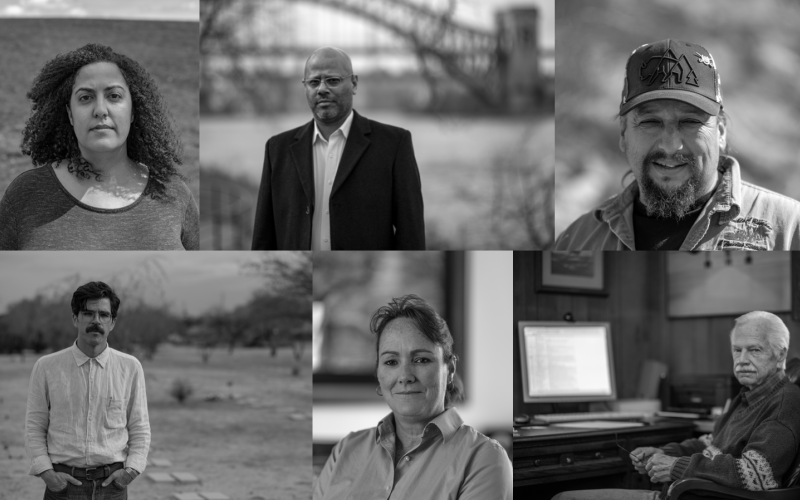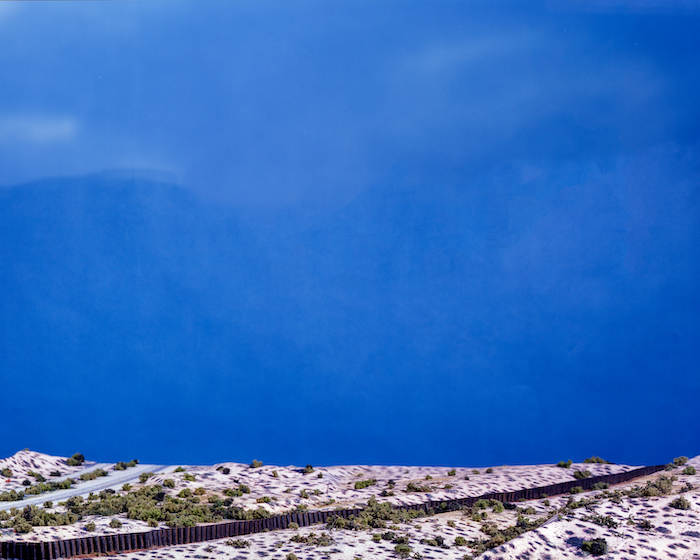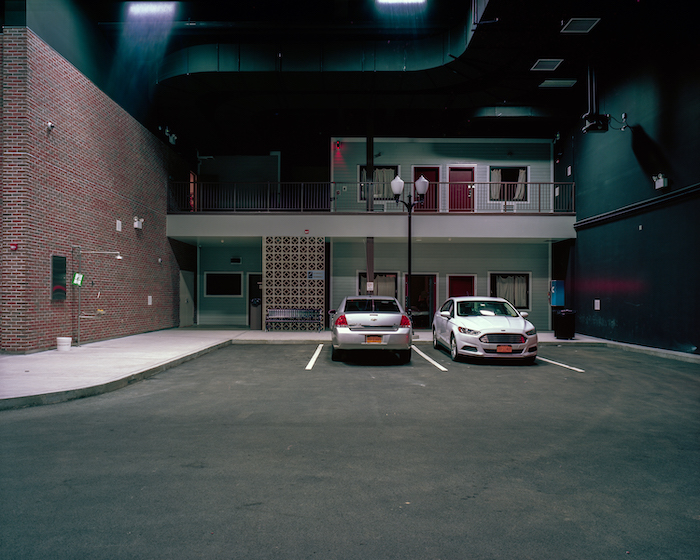Exhibition Exploring Lives, Perspectives of American Security Workers Opens at University Art Museum

By Bethany Bump
ALBANY, N.Y. (Aug. 13, 2024) — A new exhibition exploring the people, places and ideologies of the rapidly expanding American security industry opened Monday at the University Art Museum.
Job Security: Voices and Views from the American Security Industry will be on view through Dec. 9 and features more than 50 works of art across both floors of the museum that immerse viewers in perspectives and landscapes of the security industry as gathered by artist Danny Goodwin and writer Edward Schwarzschild, UAlbany professors who spent nearly eight years traveling the country and interviewing and photographing people and places that are central to the industry.
The exhibition expands on elements from the pair’s new book, Job/Security: A Composite Portrait of the Expanding American Security Industry, which will be published today by MIT Press and contains interviews and portraits of security personnel. An excerpt from the book was published Monday on The MIT Press Reader.
Exhibition Origins
Goodwin, a professor of studio art, and Schwarzschild, a professor of English, became interested in the topic after growing up with fathers whose work in the security industry was shrouded in mystery.
“He couldn't tell us what he did and he couldn't tell us where he did it,” said Goodwin, whose father worked in defense as an engineer for Texas Instruments. “We knew almost nothing growing up about what he did except that it was important. He was saving the world.”

Their interest in the field grew even more after UAlbany announced in 2015 it would be opening the nation’s first College of Emergency Preparedness, Homeland Security and Cybersecurity to train the next generation of security and preparedness officials.
“We thought, OK, if this is a growth industry, what does it mean that not just Danny and I are going to have dads involved in mysterious things shrouded in all kinds of secrecy but that a huge number of people in this country are?” Schwarzschild said. “What does that mean for individuals, for our culture and for society as a whole?”
The pair, who had worked on projects and exhibitions together previously, began reaching out to leaders in the new college to let them know they were interested in interviewing security professionals and experts about the meaning of their jobs. While they knew there was a lot some couldn’t share, they wanted to know about the impact of security work on their interior lives, as well as on their families and communities.
College leaders helped put them in touch with industry insiders and they eventually traveled roughly 25,000 miles crisscrossing the country to interview more than 30 people for the book who currently or previously worked at agencies ranging from U.S. Border Patrol, Secret Service, Central Intelligence Agency, Federal Bureau of Investigation and Homeland Security, as well as various branches of the military. Interview subjects included senior CIA officials, Border Patrol agents, journalists, professors, bomb techs, operatives, targets and critics of the industry, such as Eyal Press, who has written about the moral injury drone operators face after carrying out killings from the safety of far-away quarters.
Exhibition Overview
The visual and interactive possibilities of the project were immediately apparent, said Corinna Ripps Schaming, director and chief curator of the University Art Museum, who organized the exhibition along with Robert R. Shane, associate curator at the museum.
Goodwin had taken high-quality portraits and landscape photos for the book that could be printed at large scale and installed in the museum, and spatial audio could be used to present the shifting narratives and contradictory opinions offered throughout the book, she said.
“The more that we at the museum reflected on the book, it became really apparent that there was so much in there that could make a physical exhibition,” she said. “I mean how do you visualize a shifting narrative? What an exhibition can do is take complex ideas like these into a physical space and cause you to think about them in new ways.”
Opening with portraits of Goodwin and Schwarzschild's fathers, the first floor of the museum presents the faces and voices of the American security industry through Goodwin’s black-and-white portraits of interview subjects and framed copies of Schwarzschild's redacted notebooks and interview transcripts.

Video installations allow visitors to hear competing perspectives on the industry at once. In the installations, visitors can see and hear recordings of interview transcripts, read by CEHC graduate students seeking to enter these fields, on pairs of vertical monitors that are facing each other. Standing between the two monitors, they can hear two voices speaking at once and must move closer to one speaker or the other to hear each perspective more clearly.
The second floor invites viewers to question the reality of what they see as they move throughout the space, which houses Goodwin's large-scale color photographs of emergency simulation and security training facilities, as well as tabletop paper models of security sites where access was physically restricted or digitally censored on Google Earth.
Works such as the seven-foot-high City Drugs, Cityscape Simulator, State Preparedness Training Center, Oriskany, NY (2019) was shot with a 4x5 view camera and appears to depict a generic American “Main Street” town. But the courthouse, drug store, motel and shops captured in the image are not real and are actually used to train security personnel for emergencies and disasters.
Teaching, Learning and Programming
In keeping with the University Art Museum’s mission to serve as a hub for experiential learning and cross-disciplinary dialogue, the Job Security exhibition also provides opportunities for teaching, learning and programming.
During the fall semester, the museum will host an interdisciplinary graduate course led by Goodwin, Schwarzschild and CEHC Dean Robert P. Griffin on topics explored in the exhibition. It will be Goodwin and Schwarzschild’s fourth collaboration integrating museum-based learning into their teaching approaches.
With support from the Department of Art and Art History, the Department of English, the New York State Writers Institute and CEHC, the museum also will offer public events and discussions featuring an international lineup of artists, scholars and security experts who will discuss the exhibition’s themes. Programming announcements will be posted on the museum’s website.
Faculty from UAlbany and institutions around the region are invited to bring their classes to the exhibition and can schedule self-guided visits or reach out to the museum’s Education Coordinator, Berly Brown, to schedule an exhibition tour.




